LBW has been the most controversial aspect of cricket over the years. The introduction of the Decision Review System (DRS) made it even more complicated. Finally, when it was accepted that the Technology can have error margins, the ‘onus’ was again shifted to the on-field umpires calling it the ‘Umpire’s call’. So, what is an umpire’s call in simple terms? How does it affect the third umpire’s decision?
An umpire’s call comes into play when the third umpire cannot conclusively decide one of the three aspects of a LBW decision; ball pitch, ball impact and whether ball would have hit the wickets. In such cases, the third umpire sticks with the on-field umpire’s decision and it is known as umpire’s call.
If that sounds confusing, well it is. But do not worry, because that is exactly the purpose of this article. I shall explain what is an umpire’s call in simple terms and how does it affect the decision making of the third umpire and the game of cricket in general.
What is the Decision Review System (DRS) in Cricket?
DRS or the Decision Review System was introduced in 2008 to allow teams to refer the decision to the third umpire when asked by the batsman or the bowling team captain.
The DRS allows decisions related to LBW or Caught to be referred to the third umpire who then checks for it using a combination of technologies like Hawkeye, Hotspot and Snickometer, or Ultra edge.
Hawkeye is mainly used to project the future trajectory of the ball from the moment of interception with the bat or the person of the striker. The Hotspot, Snickometer or Ultra-edge is used to determine whether the ball hit the bat.
DRS is one of the most controversial law in the game of cricket and it continues to be so despite several amendments over the years. The introduction of umpire’s call in LBW decisions makes it even more confusing since, in the end, the Umpire’s verdict is given ‘benefit of the doubt’ when technology cannot conclusively come to a decision.
The basic thing to remember about DRS is that it exists to remove the howlers in the game, and not necessarily to get every single decision correct. Let’s try to understand what is an umpire’s call in the LBW decisions in Cricket.
What is the meaning of Umpire’s Call in LBW decisions?
To understand umpire’s call in cricket, let’s first understand how the DRS works in case of an LBW decision.
DRS Review Process for LBW Decisions
Imagine a situation where the bowler has bowled a delivery that hits the pad of the batsman and the fielding team goes up in unison to appeal for LBW.
Now two scenarios can happen here.

First, the umpire gives it out, and the batsman request for a DRS review by making a T-signal with his hands or hand and bat as Trott did in the image above –
The second scenario is when Umpire doesn’t give the LBW decision in favor of the fielding team and the fielding team captain asks for a review.
Step 1 – No Ball Checking

Now, the DRS review for LBW decision begins with checking the No-ball first. If it is a no-ball, the batsman is declared Not Out and there is no need to check further for LBW.
Step 2 – Checking for Contact with the Bat

Next, the third umpire checks for impact with the bat using Hotspot, Snicko or Ultra Edge whichever technology is available. If the contact with the bat is established then the batsman is given Not Out.
Step 3 – Checking the Ball Trajectory
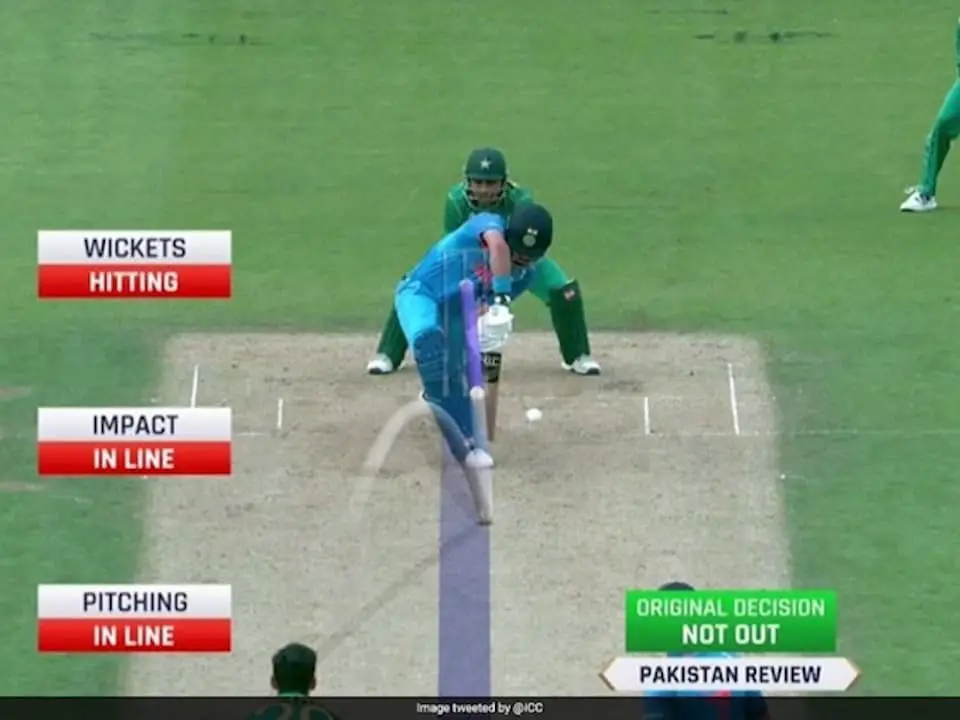
Once it is established that it’s a legal delivery and the bat had no contact with the ball, then the Hawkeye comes into the picture to check the accuracy of on-field umpire’s decision. The DRS review for LBW is judged on three parameters.
- If the ball pitched, did it pitch in line or on off-side of the line?
- Was the impact with the pad or person in line?
- Was the ball going to hit the wickets as per Hawkeye’s projection?
If the answers to all these questions is a clear ‘Yes’ or ‘Red’, as shown in the below picture, then the batsman is declared out by the third umpire.
Also, if the answer to one of these questions is ‘No’ or ‘Green’, then the batsman is deemed to be Not Out in such a case.
In either case, the umpires have to face an embarrassing situation when they are proven wrong. They are supposed to accept the error and reverse their original decision.
So When is Umpire’s Call Considered?
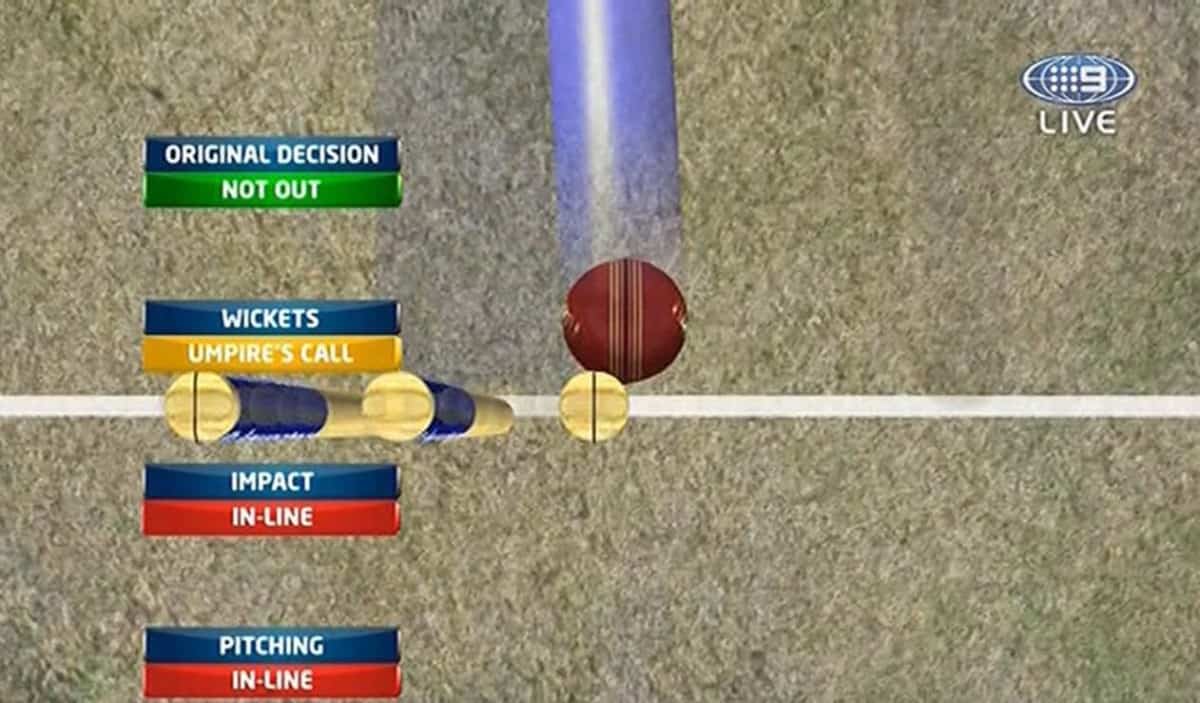
So where does the Umpire’s call come into the picture? The Umpire’s call comes into consideration when the Hawkeye technology finds it difficult to provide a conclusive verdict on any of the three questions – pitch, impact, and wickets hitting.
In such cases, the third umpire stays with the on-field decision. In other words, the ‘Umpire’s call’ takes precedence over technology.
Let’s take a look at the umpire’s call on the different aspects of the LBW decision.
What’s Umpire’s Call on Ball Pitching?
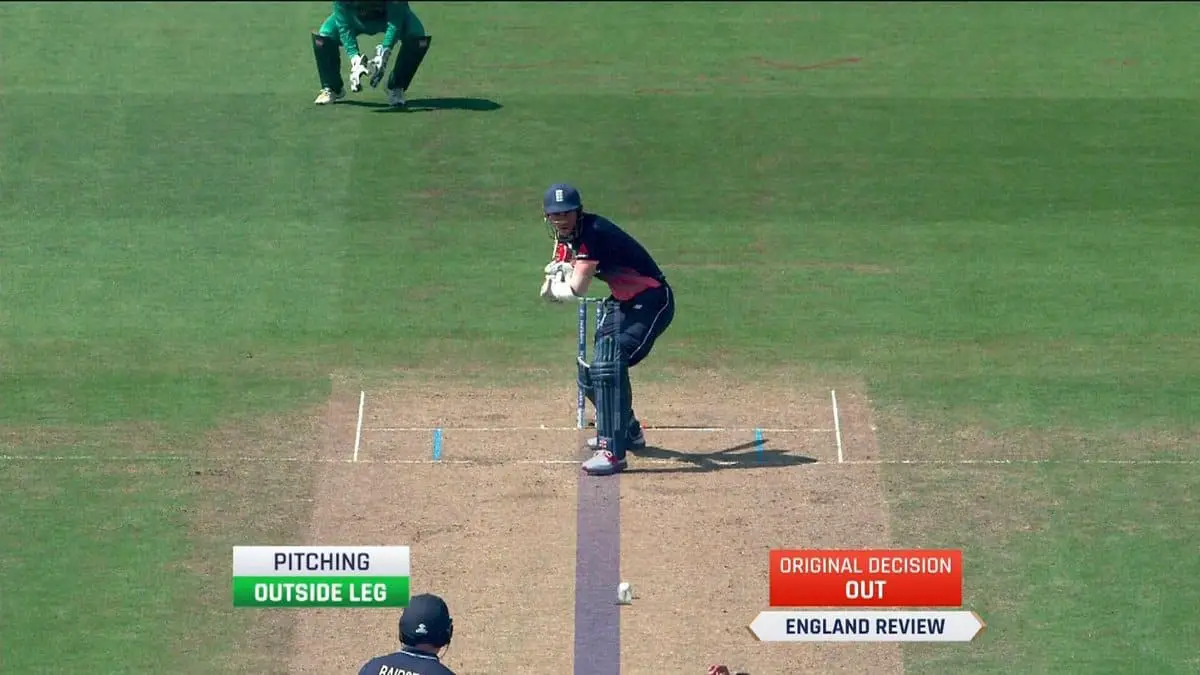
The interpretation of pitching between wickets is always considered in relation to the center of the ball at the time of pitching.
The pitching zone or the ‘Line’ is defined as the 2-D area between two sets of wickets at both ends and its boundaries consisting of the base of the stumps at both ends and the outside edges of off and leg stumps at both ends.
The relevant delivery in terms of LBW is the one that pitches on the line or outside of it on the Off-side. The one that pitches outside the line on the leg side immediately invalidates the LBW appeal.
The umpire’s call comes into picture when the technology cannot decide whether the center of the ball was definitely outside the line on the leg side, as shown in the image above. In such cases, if the umpire deems it to be in line then it is in line else it is considered outside Leg and Not out decision is declared.
What’s Umpires’ Call on Impact?
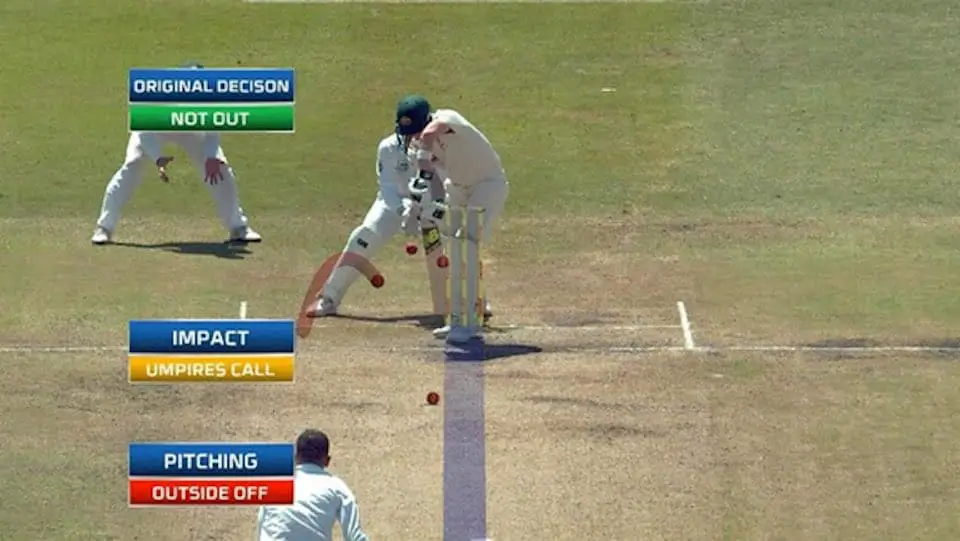
Here, the impact in question is the first contact of the ball with the pad or the person of the striker before touching any part of the bat.
For the LBW decision to hold, the impact must be inline between the wickets. In cases, as shown below, the technology cannot conclusively decide whether the impact has been inline or not, the third umpire goes ahead with Umpire’s call.
What is Umpire’s Call on Ball Hitting the Wickets?
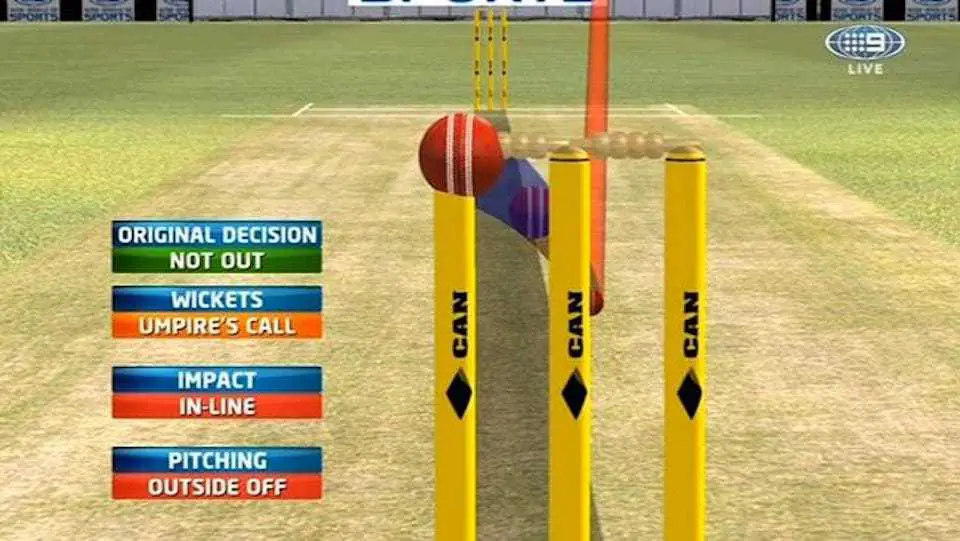
This is one of the more controversial ones and the one that riles the people opposing the DRS.
Umpire’s call on hitting the wickets comes up when Hawkeye can’t decide whether the ball would have hit the stumps. This is where the margin of error of the technology is considered. While the technology cannot track the ball 100% accurately, a margin of error is considered in which it is deemed that ball may or may not have hit the stumps.
In such a scenario, the third umpire reverts back to the decision made by the on-ground umpire.
Can a DRS Review be Retained?
Each team gets 2 unsuccessful reviews per innings in Tests and 1 unsuccessful review in ODIs. Due to Covid-19 guidelines, currently, 1 extra review is given in Tests and ODIs.
‘Unsuccessful’ is the key word here. As long as the team is correct, it can keep reviewing. In case of the umpire’s call, irrespective of the decision made, no reviews are lost. Thus, negating the effect technological inaccuracy in teams losing out on reviews. All such reviews involving Umpire’s call are said to be retained.
Umpire’s Call New Rules and History?
Initially in Test Cricket, when the rule was officially introduced in Test cricket, the Umpire’s call used to result in the team losing the review if the final decision went against the team.
In the earlier days, the reviews used to be replenished after 80 overs. However, ICC later changed the rules to only 2 reviews per innings with a provision that the team wouldn’t lose a review if the final decision was based on the umpire’s call.
Furthermore, earlier umpire’s call on hitting the stumps used to be considered from the center of the ball hitting the center of the stumps. This would sometimes result in situations that half the ball was hitting the outer half of the stumps yet the batsman would be given not out.
For this reason, ICC later modified this rule to consider the outer edges of the off and leg stumps, basically widening the area by half a stump on each side to the benefit of the bowlers.
Final Thoughts
The umpire’s call is a double-edged sword depending on what side of the final decision you are on. The DRS was introduced to rectify the errors, if any, made by the umpires. The same system defers to the on-field umpire in case of doubt. Sounds a little weird but that’s how some of the cricket rules have been.
As a player, you must learn to use the DRS wisely. A risky DRS review expecting to get an umpire’s call at least, have at times, rewarded the team taking the gamble. There’s a flip side to it as well.
This was an attempt to educate the readers on umpire’s call and its implications. It’s not full-proof, but we can learn and live with it.
Image Credit – The featured image of this post is credited to Kroome111 and is licensed under CC BY 3.0.
